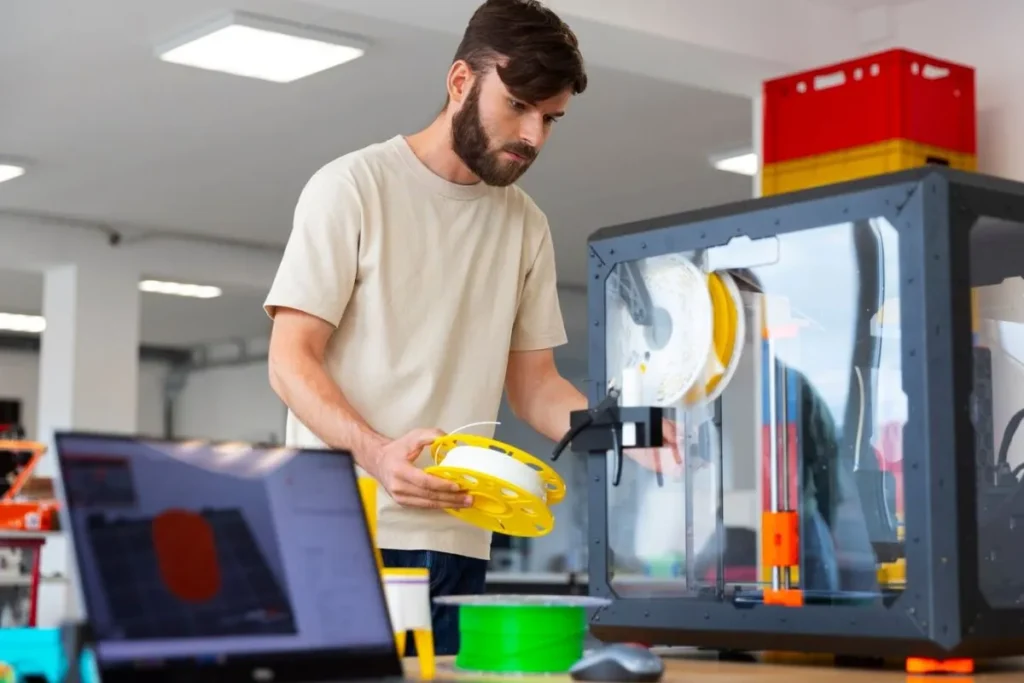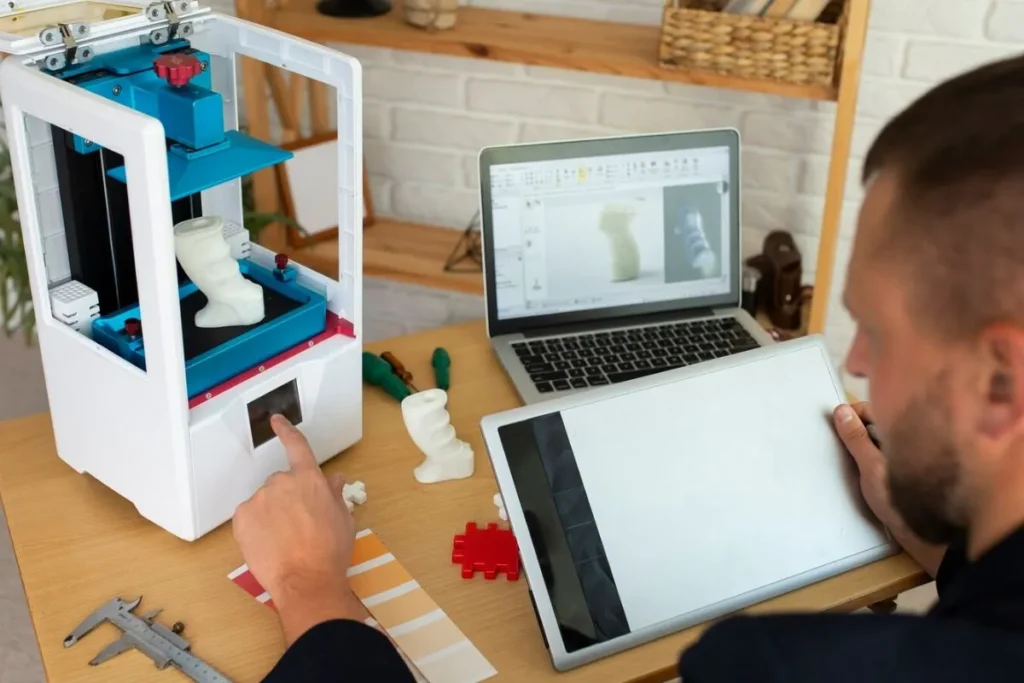Using 3D printing to enhance art education has been a game-changer in classrooms. It opens new avenues for creativity and learning, allowing students to explore their artistic skills in innovative ways. This article will explore projects and ideas to integrate 3D printing into art education, providing practical examples and inspiration for educators.
3D printing enables students to bring their digital designs to life, offering a hands-on learning experience. It allows for the creation of intricate sculptures, unique jewelry, and detailed models that would be difficult to produce by hand. By incorporating 3D printing, students can experiment with different materials and techniques, fostering a deeper understanding of artistic concepts.
In addition to fostering creativity, 3D printing in art education promotes problem-solving and critical thinking skills. Students learn to troubleshoot design issues and refine their creations, enhancing their technical abilities. This technology also encourages collaboration, as students can work together on projects, share ideas, and learn from each other.
Moreover, 3D printing can be used to teach art history and cultural appreciation. Students can recreate historical artifacts or design pieces inspired by different cultures, deepening their understanding of artistic heritage. Integrating 3D printing into art education not only modernizes the curriculum but also connects traditional art forms with contemporary technology, enriching the educational experience for all students.
The Impact of 3D Printing in Art Education
3D printing allows students to bring their ideas to life. It bridges the gap between traditional art techniques and contemporary technology. This advanced method provides a tangible form to their creativity.
By converting digital models into physical objects, students understand concepts better. It enhances their spatial thinking and problem-solving skills. This method also provides hands-on experience with cutting-edge technology.
Art education enriched with 3D printing prepares students for future careers. It merges art with science and engineering. This integration fosters interdisciplinary learning and innovation.
Projects to Implement in the Classroom
Sculpture Reproduction
Students can reproduce famous sculptures. This helps them study details and understand the forms. They can create replicas of historical art pieces.
Using various 3D modeling software, they can experiment with different styles. This project improves their skills in both art and technology. It also enhances their appreciation for art history.
Additionally, creating their own sculptures encourages originality. They can explore abstract shapes or intricate designs. This boosts their creativity and technical skills.
Custom Jewelry Design
Designing custom jewelry is another exciting project. Students can learn about material properties and design processes. They create their own unique pieces of art.
This project teaches them about different types of materials. They experiment with metals, plastics, and more. It combines art with material science and engineering.
Students also develop an understanding of the production process. From design to the final product, they see how art transforms into wearable pieces. This holistic approach enhances their learning experience.
Interactive Installations
Creating interactive installations opens a new realm of possibilities. Students can design pieces that involve movement or lighting. These installations engage multiple senses.
Using sensors and microcontrollers, they can add interactivity. This merges art with technology. It makes their projects more captivating and dynamic.
This project encourages collaboration among students. They work together on complex designs. It also develops their skills in both art and coding.
Benefits of Using 3D Printing in Art Education
Enhanced Creativity and Innovation
3D printing enhances creativity. It provides a new medium for expression. Students can create complex shapes and structures.
It encourages them to think outside the box. Traditional art forms are limited by physical constraints. 3D printing breaks these barriers.
This advanced technique enables students to innovate. They explore new materials and methods. It broadens their artistic perspective.
Hands-on Learning Experience
Hands-on experience is crucial in art education. 3D printing provides this opportunity. Students can touch and feel their creations.
This tactile experience reinforces their learning. It helps them understand abstract concepts better. Physical interaction with art deepens their comprehension.
It also makes learning more engaging. Students are more invested in projects they can physically handle. This engagement boosts their motivation and interest.
Preparation for Future Careers
Integrating 3D printing prepares students for future careers. Many industries now use this technology. Knowledge of 3D printing is a valuable skill.
Art students can pursue careers in design, engineering, and manufacturing. This technology is also used in healthcare and architecture. It opens a wide range of opportunities.
Early exposure to 3D printing gives students a competitive edge. They enter the workforce with advanced skills. This makes them more attractive to employers.
Challenges and Solutions in Implementing 3D Printing
Technical Challenges
Implementing 3D printing in classrooms has technical challenges. Equipment and software can be complex. Teachers need to be trained to use them effectively.
Schools may face issues with maintenance and repairs. Machines require regular upkeep. This can be costly and time-consuming.
One solution is to provide adequate training. Workshops and tutorials can help teachers. Partnering with tech companies can provide technical support.
Cost of Equipment and Materials
The cost is a significant barrier. 3D printers and materials can be expensive. Not all schools have the budget for this technology.
However, there are affordable options available. Desktop 3D printers are less costly. Schools can start with basic models and upgrade later.
Grants and funding can also help. Many organizations support educational technology. Applying for these funds can ease financial constraints.
Curriculum Integration
Integrating 3D printing into the curriculum requires careful planning. It should align with educational goals. Teachers need to develop relevant projects.
This integration should be gradual. Start with simple projects. Gradually introduce more complex applications.
Collaborating with other departments can be beneficial. Projects can combine art with science or engineering. This interdisciplinary approach enriches learning.
- Start with basic training for teachers.
- Choose affordable 3D printing equipment.
- Secure funding through grants and partnerships.
- Develop a gradual integration plan for the curriculum.
- Encourage interdisciplinary projects to enhance learning.
Conclusion: Embracing the Future of Art Education
Incorporating 3D printing into art education is transformative. It enhances creativity and provides hands-on experience. Students are better prepared for future careers.
Challenges exist but are manageable with planning. The benefits far outweigh the obstacles. Schools should embrace this technology.
By leveraging 3D printing, art education can reach new heights. It fosters innovation and interdisciplinary learning. This prepares students for a world where technology and art converge.
Interested in more ideas for integrating technology in education? Subscribe to our newsletter for updates and insights.
Frequently Asked Questions
What is the main benefit of using 3D printing in art education?
3D printing enhances creativity and provides hands-on experience, helping students better understand concepts and prepare for future careers.
How can schools manage the cost of 3D printing equipment?
Schools can opt for affordable desktop 3D printers and seek funding through grants and partnerships with tech companies.
What kind of projects can students work on using 3D printing?
Projects include sculpture reproduction, custom jewelry design, and interactive installations, combining art with technology.
How does 3D printing benefit students’ future careers?
3D printing skills are valuable in various industries, from design and engineering to healthcare and architecture, giving students a competitive edge.
What are the challenges of implementing 3D printing in classrooms?
Challenges include technical issues, cost, and curriculum integration, which can be managed through training, affordable equipment, and careful planning.



